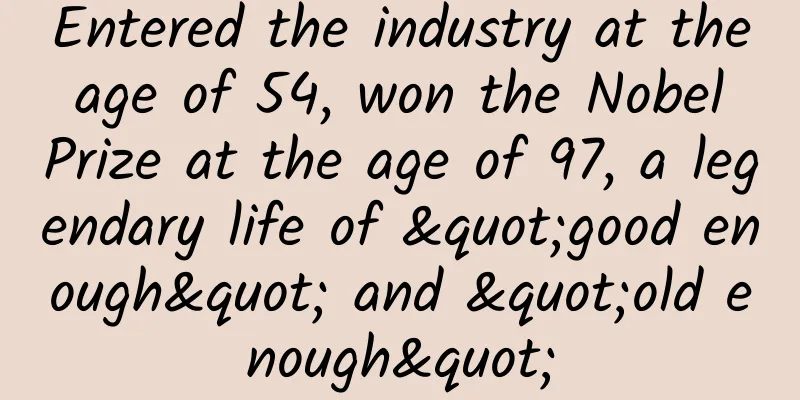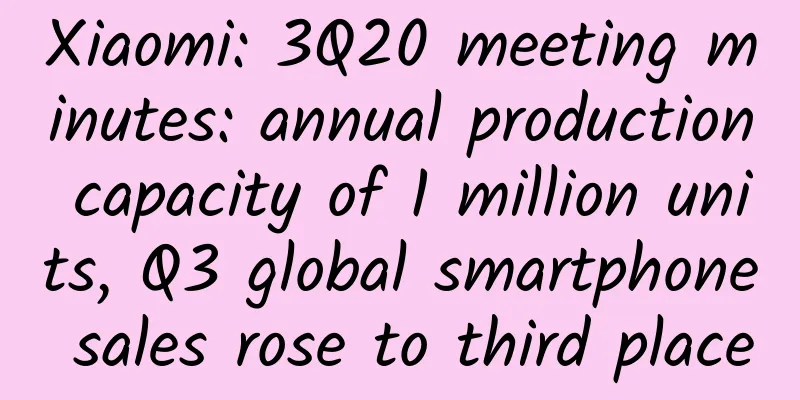Entered the industry at the age of 54, won the Nobel Prize at the age of 97, a legendary life of "good enough" and "old enough"

|
On June 26, 2023, John Goodenough, an American physicist, chemist, and one of the inventors of lithium-ion batteries, passed away. In one month, he will be 101 years old. In 2019, he won the Nobel Prize in Chemistry and became the oldest winner at the time. Because of his last name, the world got to know such a "good enough" old man. His most famous work is naturally in lithium-ion batteries, a field he entered at the age of 54. He has been practicing for decades and is still at the forefront of scientific research at the age of nearly 100. He is also an important solid-state physicist who has made outstanding contributions in the fields of metal oxides, magnetism, and high-temperature superconductivity. This article is dedicated to Professor Goodenough, who has lived a good enough life. Written by Liu Xinwei Some of us are like turtles; we walk slowly, struggle along the way, and may not figure it out by the time we are 30. But these turtles have to keep crawling. ——John B. Goodenough Every morning before 8 o'clock, an office of the Department of Mechanical Engineering at the University of Texas at Austin welcomes a white-haired, energetic old man, John B. Goodenough. The Cockrell Centennial Chair Professor is 97 years old, and has just broken the record of the oldest Nobel Prize winner. He shared the 2019 Nobel Prize in Chemistry with M. Stanley Whittingham and Akira Yoshino for "developing the key technology of lithium-ion batteries." Today, we are enjoying their achievements - from mobile phones and laptops to electric cars and even clean energy storage, this powerful, rechargeable battery has been widely used in various fields. The official evaluation of the Nobel Prize is, "They have created a rechargeable world." In fact, Goodenough started researching lithium batteries after he was over 50 years old. He won the Nobel Prize at the age of 97, which can be said to be "old enough", but he still worked hard on the front line of scientific research - precisely because he felt he was not good enough. His legendary life continues. Teenager with dyslexia gets into Yale Goodenough was born in Jena, Germany in the summer of 1922. His father, Erwin Goodenough, was studying for a doctorate at Oxford University at the time. He believed that German doctors were more skilled in caesarean sections, so when his wife was about to give birth, he brought her to Jena in a bullock cart. The following year, Erwin Goodenough received his degree, returned to the United States, and taught at Yale University. The memory of little Goodenough began in the suburbs of New Haven, Connecticut. Left: John Goodenough and his brother Ward; Middle: Goodenough around 1930; Right: Goodenough and his sister Hester (right). Image source: nobelprize.org Goodenough has loved nature since he was a child, and catching insects and digging holes is no problem for him, but his childhood was not happy. His closest playmate was a dog named Mack. Goodenough also likes to study, but reading was difficult for him in the early days - he was said to have undiagnosed dyslexia, so he said that he was a "bad student" at that time. In order to follow his brother who was three years older than him to enter Groton School (the top private school in the United States), he taught himself to read and write to prepare for the entrance examination. In the end, he was successfully admitted and received a scholarship. This made him sigh, "I still think this is a mystery!" Goodenough believes that the strict education in high school benefited him a lot and he was eventually admitted to Yale University. But compared to studying, he loves sports more because it allows him to maintain a good figure and interpersonal relationships. The elites in the United States often have excellent families of origin, and Goodenough is no exception. His father later became a famous religious research scholar in the United States, and his brother became a famous anthropologist, making the rare surname Goodenough recorded forever in history. But their family life was not harmonious, and Goodenough even used the word "disaster" to describe his parents' marriage relationship. Restricted by religious beliefs, Goodenough's parents divorced before he entered college, and his father soon married his research assistant. After entering college, Goodenough felt freed from this bad relationship. In 1940, his father gave him $35 and said, "Go, son, go to college." 35 dollars was barely a fraction of the tuition, but Goodenough firmly stated that he would not spend a penny of his family's money. Under the arrangement of the old principal, Goodenough used his spare time to tutor students from wealthy families. Goodenough recalled, "For 21 meals, I worked 21 hours a week." With the addition of scholarships and the help of friends, Goodenough lived a good life. After entering university, Goodenough did not have a clear learning goal. Perhaps influenced by his family's liberal arts background, he also studied liberal arts courses first, but Goodenough admitted that he was not good at reading, "I don't like reading and I can't understand it." Therefore, he did not want to study history or law in the future. At that time, he felt that he could go to medical school, but he was not interested in psychiatry, and his interest in mathematics was growing day by day. A mathematics professor Egbert Miles, who had a keen eye for talent, saw Goodenough's talent and encouraged him to study mathematics. At Yale, he also joined the mysterious elite organization "Skull and Bones Society", which is a long-standing secret society organization at Yale University, where many US presidents were born (some conspiracy theorists even believe that they control the power society in the United States). This adds a touch of mystery to Goodenough's legendary life. Yale Skull and Bones Society, this place is called "the grave". Source: Independent Goodenough and members of the Skull and Bones Society (back row, first from the right in the picture below). Image source: nobelprize.org A meteorologist who doesn't want to be a physicist is not a good soldier In the winter of 1941, when Goodenough was a sophomore, the Pearl Harbor attack broke out. Many of his classmates were preparing to join the army, and Goodenough was no exception. Professor Egbert Miles knew Goodenough's talent and told him, "Don't serve the Marine Corps like everyone else. They need some people with mathematical knowledge to conduct meteorological research." Goodenough was not notified to join the army immediately, but to complete his degree. But at that time he had only completed one course in the Department of Mathematics. In just two and a half years, Goodenough graduated from Yale with a degree in mathematics, and was then drafted into the Army Meteorological Service, stationed on an island off the coast of Portugal. Because the "jet stream" had not yet been discovered in that era, planes were always delayed. The military hoped that meteorological researchers like Goodenough could not only predict the weather, but also calculate flight times and the best travel plans. Perhaps most notably, he provided the correct estimated arrival time for the flight carrying the Supreme Commander of the Allied Forces, Eisenhower. Of course, because the wind direction was not taken into account, the plane ran out of fuel before reaching its destination. After the war, although the Army Headquarters wanted Goodenough to stay in the army and continue to be a meteorologist, he chose to continue studying - he wanted to study physics. After reading the book "Science and the Modern World" by mathematician and philosopher AN Whitehead, he realized that science had an increasingly strong impact on the development of the world. He wrote in his autobiography, "If I had the opportunity, I should study physics." Goodenough during his military career. Source: news.uchicago.edu In 1946, when a telegram was sent to send outstanding military officers to study and research at the University of Chicago, Goodenough came to the Department of Physics at the University of Chicago. This opportunity came from the recommendation of his mathematics professor, who hoped that people with academic prospects could continue their postgraduate studies, and this truly changed Goodenough's life. When he arrived at the University of Chicago, Goodenough still remembered word for word what the registrar said to him, "I don't understand you old soldiers. Don't you know that everyone who has made a major achievement in physics has already made it when you were your age? Do you want to start now?" The person who said this slightly sarcastic remark was John A. Simpson, who was only 30 years old at the time and had only returned from the Manhattan Project for a few years. He probably didn't know that he would become a famous experimental physicist in the future. Goodenough was only 24 years old. He admitted that "most breakthroughs in theoretical physics come from young people", but later he realized that physics needs experiments, and the physical intuition and breakthroughs required in this regard require accumulation. At that time, the threshold for entering the Department of Physics at Chicago was extremely high. In order to ensure that graduate students could understand the real knowledge, Enrico Fermi, known as the last theoretical and experimental all-rounder in the history of physics, was responsible for the qualification examination - 8 hours a day, 4 days of examination. Goodenough took the exam twice, and the first time allowed him to obtain a master's degree, and the second time he passed was allowed to continue to pursue a doctorate, which also laid a solid foundation for him. When it came time to choose a major, Goodenough found that the world's first nuclear reactor that Fermi had secretly worked on was not suitable for him. He wanted to study solid-state physics and study the properties of materials, so he found another talented physicist, Clarence Zener (later famous for inventing the Zener diode). Zener decided that Goodenough would be his student and told him two questions: "Your first question is to find the problem, and your second question is to solve it." Goodenough did both. He studied how the interaction between the Brillouin zone boundary and the Fermi surface of a hexagonal close-packed metal crystal changes its structure. (In momentum space, the position of the Fermi surface of a metal depends on the electron density in the conduction band, while the Brillouin zone is determined by the translational symmetry of the periodic potential in which the electrons move.) At an academic conference, he even received advice from Léon Brillouin himself, "Young man, you have got the Brillouin zone wrong." But in fact, it was Brillouin's physical picture that was wrong, and this research eventually earned him a doctorate in 1952. Goodenough and his wife Irene Wiseman. Source: nobelprize.org Developing memory for computers After graduation, Goodenough chose to work at the MIT Lincoln Laboratory, mainly conducting research on solid magnetism. This laboratory was established with the support of the US Air Force to build the first US air defense system (later the Semi-Automatic Air Defense System, SAGE). Goodenough recalled, "It was a wonderful experience... They had radar and communication systems, but no digital computers." In fact, at that time, the world's first commercial computer was still under development and did not have the storage capacity required by the military. Goodenough began to work with engineers to develop key components in random access memory (RAM), which is today's computer memory. Goodenough's team needed to find suitable magnetic materials as storage elements to solve the problem of achieving square hysteresis loops. When this work was completed, half of Goodenough's colleagues left the laboratory and entered the industry, seeing the great potential of such research. He worked at Lincoln Laboratory for 24 years, where he studied transition metal oxides and developed various magnetic materials for computer storage devices, truly involving the research of chemistry and materials science. During this period, Goodenough explored the mysteries of material structure as a physicist, proposed theories related to magnetism, and especially developed the concept of coordinated orbital ordering of oxide materials (Jahn-Teller effect) during the development of RAM. The subsequent Goodeough-Kanamori semi-empirical rule became a milestone in the subsequent research of solid-state physics and chemistry, laying the foundation for the design of magnetic materials and computer development. He also conducted in-depth research on topics such as atomic magnetic moments and electronic behavior of metals and sulfides, and even accidentally discovered the key mechanism of high-temperature superconductivity from electronic behavior in the 1970s. His monograph "Magnetism and Chemical Bonds" was considered the "Bible" by students who later studied magnetic metals. Goodenough's classic book "Magnetism and Chemical Bonding" Source: Internet In fact, Goodenough also liked his research in physics more, so much so that when he won the Nobel Prize, he thought he was doing research on the Mott transition. "I think the physics research of this process is very important, and I am very satisfied." Of course, he was not disappointed that he missed the Nobel Prize for such research. After all, this was only a small part of his early research career. Started a new research career at the age of 54 In the 1960s, pollution swept across the United States. In order to reduce pollution, automobile companies have begun to consider bringing electric vehicles back to the market. In fact, in the early days of the birth of automobiles, batteries started earlier than internal combustion engines, but battery performance developed slowly and was gradually eliminated. Goodenough was invited by Ford as a scientist to evaluate a new sodium-sulfur battery. In 1969, Goodenough first came into contact with electrochemistry and battery research, and he began to work on ionic conductivity and energy storage. Initially, this work achieved good results, but due to safety issues, the battery was not suitable for use in cars, and Ford canceled the project. But the project still brought many benefits - it provided scientists at the time with richer knowledge and ignited the government's interest in energy science. Especially in 1973, when the first oil crisis hit the United States, major automobile companies began to produce electric vehicles, and government funds began to be invested in energy-related fields. Goodenough wrote in his autobiography, "Our dependence on foreign oil makes the country vulnerable, just like being threatened by Russian nuclear bombs." Goodenough aimed at the energy field and prepared to make a big move. Lincoln Laboratory today. Image source: LinkedIn However, since the Lincoln Laboratory was funded by the Air Force, energy-related research was not the Air Force's responsibility. Without funding, Goodenough knew he had to leave. At this time, Oxford University needed a professor to manage the Inorganic Chemistry Laboratory. In an interview, he said, "The people in Oxford are very imaginative and invited a non-academic person with a physics background to be the head of the laboratory." Goodenough only took two chemistry courses as a graduate student, and he was the most suitable candidate. In fact, Goodenough had another option at the time, which was to go to Tehran University in Iran. This option was completely rejected by his wife because Iran was in the midst of a revolution at the time. Goodenough's decision to go to Oxford was supported by his wife. He said, "This was revolutionary for me because from then on I would officially become a scholar, and a chemist." That year, Goodenough was 54 years old. He did not know that he would shine in the field of batteries. The birth of lithium batteries That same year, Whittingham, who was at ExxonMobil, published an article in Nature about a battery that used a lithium anode and a titanium disulfide cathode. The battery had a high energy density, and he made a layered material that allowed ions to shuttle, meaning the battery could be recharged. This paper earned Whittingham a Nobel Prize with Goodenough. However, lithium itself is an extremely active element that can even react with nitrogen, which places high demands on the battery's manufacturing process. On the other hand, as the battery is charged and discharged, dendrites will grow on the surface of the lithium metal, which are like small "burrs". When they come into contact with the negative electrode, they cause a short circuit in the battery, resulting in spontaneous combustion, explosion, and even the destruction of the laboratory. For safety reasons, ExxonMobil abandoned the project. Goodenough believed that this research was promising. His physical intuition told him that metal oxides were more suitable for making battery cathodes than sulfides because they could produce higher electric potentials, even though he had not yet realized the huge "potential" of his discovery. In 1980, the 57-year-old Goodenough led a team to discover that the use of lithium cobalt oxide (LiCoO2) could almost double the power and output a voltage of 4V. Lithium cobalt oxide is a layered material, and lithium atoms are located between the octahedral structure composed of oxygen atoms and cobalt atoms, which can come and go freely, and this property is exactly what the battery needs. In addition, lithium cobalt oxide is milder than metallic lithium, and the dendrite problem has also been improved. This discovery was officially evaluated by the Nobel Prize as "a decisive step towards the 'wireless revolution'". The structure of lithium cobalt oxide. The purple ball in the middle is the lithium atom, the red represents the oxygen atom, and the cobalt atom is inside the structure formed by the oxygen atom. Image source: wiki However, Goodenough's invention was not taken seriously by the Western world, and even Oxford University itself was unwilling to apply for a patent. This was partly due to the decline in research on alternative energy after the oil crisis, coupled with the painful lessons of ExxonMobil, which led to no one paying attention to Goodenough's new discovery. He had to find another government laboratory and reluctantly apply for a patent. On the contrary, the Japanese saw this market. In the 1980s, Japanese electronic products went global and were in urgent need of lightweight, rechargeable batteries. Goodenough's lithium battery cathode uses cobalt oxide to almost double the potential. Image source: nobelprize.org Japanese chemist Akira Yoshino used Goodenough's work as the basis and began to study anode materials using lithium cobalt oxide as the cathode. He found that lithium ions can be attracted to petroleum coke, a carbon-based material that helps electrons and ions flow to the cathode faster. Moreover, since the cathode itself contains lithium ions, the use of petroleum coke in the anode can replace pure lithium, making the battery safer. In the end, relying on Akira Yoshino's achievements, a lithium battery with high capacity and excellent safety was developed - the "lithium-ion battery" was truly born. In 1991, Sony commercialized the lithium-ion battery for the first time. Lithium-ion batteries have become an essential accessory for each of our mobile phones today, completely changing our lives. However, Goodenough did not make a penny from this multi-billion dollar industry (then worth), and the patent he signed at the time was licensed. The second revolution of lithium batteries triggered a "world war" Goodenough did not stop his research on efficient rechargeable batteries. At that time, Oxford University stipulated that professors should retire at the age of 65, but Goodenough felt it was too early. Just like his father who found an office in Harvard Library after retiring from Yale, Goodenough returned to the United States in 1986 and came to the Department of Mechanical Engineering at the University of Texas at Austin. This started a career that lasted more than 30 years. In Texas, while looking for new electrode materials, the pragmatist Goodenough shifted some of his energy to basic research again, continuing to study the electronic properties of transition metal oxides and conducting superconductivity-related experiments. He felt that these studies would bring real innovation. And his students continued to look for new electrode materials, because lithium cobalt oxide batteries are not perfect. Although they have excellent performance, they also have the problem of short life, and cobalt, as a strategic element, is extremely expensive. In order to solve these problems, Goodenough, who was still in Oxford at the time, had already begun to lead the team to look for new materials. Goodenough's physical intuition once again told him that materials with spinel crystal structures might be more suitable, because such structures allow lithium ions to diffuse in three-dimensional space, improving efficiency. As a result, his postdoctoral fellows not only invented a manganese-based spinel structure cathode, which is safer and cheaper, but also accidentally discovered another structure in the process of continuing to advance, the olivine crystal structure, which uses the most common iron and phosphorus to form lithium iron phosphate (LiFePO4). In 1997, they developed a lithium iron phosphate battery with commercial potential, which once again triggered a storm in the field of lithium batteries - a real "storm". The crystal structure of lithium iron phosphate, white represents lithium atoms, red, purple, and yellow represent oxygen atoms, phosphorus atoms, and iron atoms, respectively. Source: Chemical Structure Today, lithium iron phosphate batteries are widely used in energy storage devices, electric vehicles and various small devices. However, Goodenough still did not profit from it and was involved in a patent dispute! When Goodenough discovered that lithium iron phosphate would once again trigger an energy revolution, he wanted to apply for a patent, but found that he had already been preempted. It turned out that a Japanese "worker" under him leaked the research. He was originally an employee of Nippon Telegraph and Telephone Corporation (NTT). He came to the team under the name of learning from Goodenough's team, and he did not comply with the confidentiality agreement. In the patent dispute, the person who first made the new material became a key figure. He was Akshaya Padhi, a postdoctoral fellow at the time, but he refused to help Goodenough prove it. The two "colluded" and disclosed the research content to NTT and made a lot of money. In the patent dispute, Goodenough could only helplessly say that there was a spy planted around him. Since any improvement to the battery would involve patents, many business giants were involved, making the patent war more and more intense, which can be called the world war of lithium batteries. Goodenough remained silent in the wave until the University of Texas at Austin and NTT reached a settlement. I don't want to retire and wait to die. Fortunately, today people attribute the discovery of lithium iron phosphate to Goodenough, an achievement he made when he was 75 years old, which completely changed the landscape of the battery world. Most people would be content with what they have accomplished, but Goodenough felt that his past work was not "good enough". The academic community currently believes that the development of lithium-ion batteries has reached its limit, and Goodenough still wants to find a better battery. At the age of 90, he set his sights on all-solid-state batteries - batteries that use solid electrolytes, which have the advantages of better safety, higher energy density, and smaller size. In a field of batteries where many competitors are vying for supremacy, this is Goodenough's choice. At present, Goodenough has achieved some results, and even though he has been controversial, he has no intention of stopping. Guiding students in the office. Source: news.uchicago.edu Goodenough knows that he is not the only one who has the ability to solve the battery problem, and he is not sure whether he can succeed, but "I don't want to retire and wait to die. I believe that what we are working on is very important." Five years ago, he said that he was only 92 years old and still had time. He hoped to solve longer-term energy problems. He said: "We must transition from dependence on fossil fuels to dependence on clean energy in the near future." "So this is what I want to do before I die, leaving a cleaner and better world." In order to achieve this ambitious goal, he decided to retire at the age of 102. Looking back on his research experience, Goodenough said, "Scientific research is often interdisciplinary, and physics, chemistry, and engineering are often interrelated, which provides me with the opportunity to really develop in the direction of materials science and engineering." He considers himself to be, "a materials scientist trained in solid-state physics, working with chemists and ceramic artists (ceramic materials are used in battery research), building a bridge between physics, chemistry, and materials engineering." In life, Goodenough is a cheerful person. His exaggerated laughter often echoes in the corridors of the office building. Until he broke his leg in 2018, he drove 40 minutes to work every day and maintained a working time of nearly 50 hours a week. In addition to scientific research, one of his few hobbies is mountain climbing. When he was young, he and his wife Ireen Wiseman traveled to many places. They met at the University of Chicago and spent their lives together. They have no children. Goodenough said, "We have each other." Goodenough and his wife Wiseman. Source: bbs.creaders.net In Goodenough's office, there is a huge tapestry of "The Last Supper". Surprisingly, he was engaged in science all his life, but he was a devout Christian. His faith did not hinder his research, but became an internal motivation and passion. For a long time, Goodenough was a Nobel Prize runner-up, but he said, "I am only in my 90s, there is still time." Now, the honor has finally come, which is good enough! References [1] Goodenough, John B. (2008). Witness to Grace. [2] Yoshino A. The birth of the lithium‐ion battery[J]. Angewandte Chemie International Edition, 2012, 51(24): 5798-5800. [3] Scientific Background on the Nobel Prize in Chemistry 2019 Lithium-ion Batteries [4] Round Squares. Goodenough: Making an Not-So-Good World Good Enough [5] https://cen.acs.org/people/profiles/Podcast-97-lithium-ion-battery/97/i35 [6] https://www.chemistryworld.com/features/goodenough-rules/8099.article [7] https://qz.com/338767/the-man-who-brought-us-the-lithium-ion-battery-at-57-has-an-idea-for-a-new-one-at-92/ [8] https://mag.uchicago.edu/science-medicine/his-current-quest https://news.uchicago.edu/story/john-b-goodenough-shares-nobel-prize-invention-lithium-ion-battery [9] https://www.nature.com/articles/d41586-019-03079-1 [10] https://www.aarp.org/home-family/personal-technology/info-2019/nobel-prize-john-goodenough.html [11] https://www.nobelprize.org/prizes/chemistry/2019/goodenough/interview/ [12] https://alcalde.texasexes.org/2015/07/the-inventor/ [13] https://www.datacenterdynamics.com/analysis/restless-inventor/ [14] https://www.eternitynews.com.au/world/winners-of-this-years-nobel-prizes-follow-jesus/ [15] http://bbs.creaders.net/life/bbsviewer.php?trd_id=1433358&blog_id=358163 [16] https://www.nobelprize.org/prizes/chemistry/2019/goodenough/biographical/ This article was originally published in the November 2019 issue of Beijing Science and Technology Daily (Science and Technology Life), and was revised by the author and published in Fanpu. Special Tips 1. Go to the "Featured Column" at the bottom of the menu of the "Fanpu" WeChat public account to read a series of popular science articles on different topics. 2. Fanpu provides a function to search articles by month. Follow the official account and reply with the four-digit year + month, such as "1903", to get the article index for March 2019, and so on. |
<<: Shine! Chinese Treasures ①丨The history of "China" is longer than you think
>>: After receiving the university admission letter, you must read this
Recommend
How to play Baidu bidding ocpc second level
For SEMers who often play with small Baidu accoun...
2021, we looked at these photos again and again
2021 From the beginning of the year to the end of...
How to achieve explosive growth in users?
Internet practitioners always have to face three ...
my country's first million-ton offshore carbon dioxide storage project put into operation
Reporters learned from China National Offshore Oi...
Among the mythical beasts in the Classic of Mountains and Seas, which one has the highest martial arts power?
Mixed Knowledge Specially designed to cure confus...
Are your information flow ad creatives repeatedly rejected? This internal audit rule is for you~
Written in front In recent years, especially this...
Three lies about smartphones
If we count from 1965 when Moore's Law emerge...
Technology News | Self-reproducing living robot is launched
[Today's cover] On the 30th, Mount Tai after ...
The copy targeting is the same, why is the CTR still lower than others?
The copywriting is obviously very well written, s...
Analysis of Weibo Fanstong advertising in Q2 2020
According to data from the 2019 Weibo V Influence...
Are there people who can hear colors and see fragrances? The amazing "pathway" in the brains of "synesthetes"
On the evening of November 11, the 12th Pineapple...
How did the 2022 Jilin epidemic happen? What exactly caused it? Attached are the detailed reasons!
Recently, the number of local confirmed cases rep...
MACD indicator detailed tutorial video "The King of Indicators MACD Indicator Application Collection"
MACD indicator detailed tutorial video "The ...









